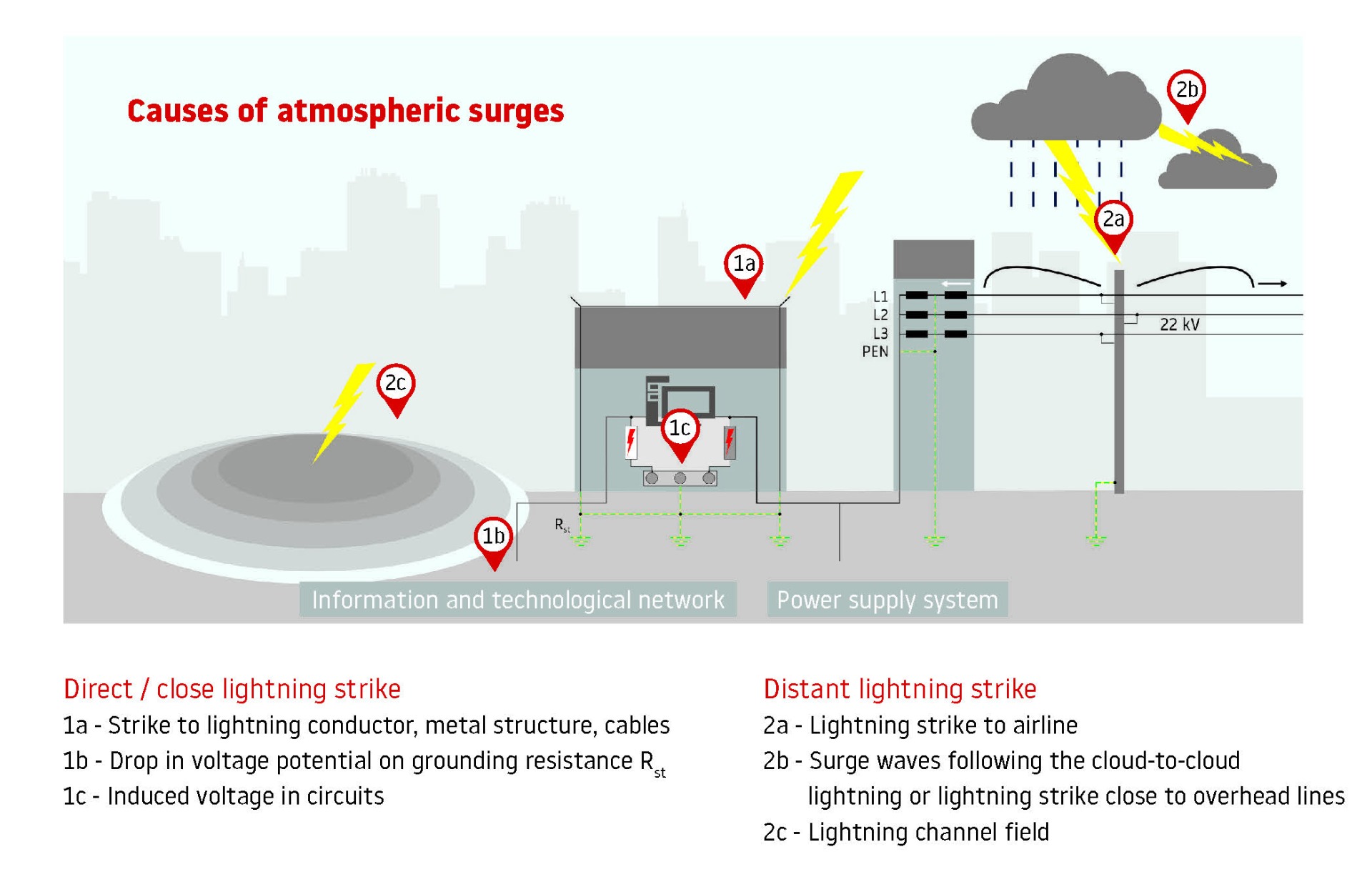Definition of overvoltage

An overvoltage is a voltage that exceeds the maximum value of operating voltage in an electric circuit.
Pulse overvoltages, their formation and division
Pulse overvoltages ares short-term overvoltages, lasting from a couple of nanoseconds up toma couple of milliseconds. It is one of the most noticeable and most harmful manifestations of electromagnetic interference (perturbing influences) and it poses a threat, especially to electronic equipment containing semiconductor components.
Depending on its origin, a pulse overvoltage is classified into the following categories:
- atmospheric overvoltages (LEMP - Lighting ElektroMagnetic Pulse)
- switching overvoltages (SEMP - Switching ElektroMagnetic Pulse)
- overvoltages formed during discharges of static electricity (ESD - ElektroStatic Discharge)
- overvoltages due to nuclear explosions (NEMP-Nuclear ElektroMagnetic Pulse)
Atmospheric overvoltages (LEMP)
They are the most dangerous, and are induced primarily by thunderstorms with lightning discharges. Overvoltage faults may occur between a phase and the ground or between phase conductors. It is caused primarily by thunderstorm activity, specifically by lightning discharges. Overvoltages, due to atmospheric discharges, manifest themselves most on overhead lines and in sections of unshielded cables.
Atmospheric overvoltages may be generated by:
- a direct or close strike of lightning into a lightning conductor, metal structure, cable...
- the destructive effect of lightning current is caused by high energy liberated in a short time, causing:
- ground-side voltage drop
- induced voltage in circuits
- a distant strike of lightning into overhead lines, causing overvoltage surges following even after a cloud-cloud discharge, or after a lightning strike close to the line
- a distant lightning strike diverted to the ground causing a lightning-channel
Switching overvoltage (SEMP)
Thisy is the very frequent overvoltage that occurs in both low-voltage and high-voltage networks.
Switching overvoltages are generated by industrial activities:
- when great charges, especially inductive ones, are switched on and off, e.g. transformers or electric motors or even small household appliances, e.g. refrigerators, freezers
- in the event of short circuits in a distribution network and the like.
Invisible voltage pulses that are immeasurable by usual means last only several a millionth or thousandth of a second, yet they can cause damage mainly to electronic equipment, sometimes even causing short-circuit, and fires

